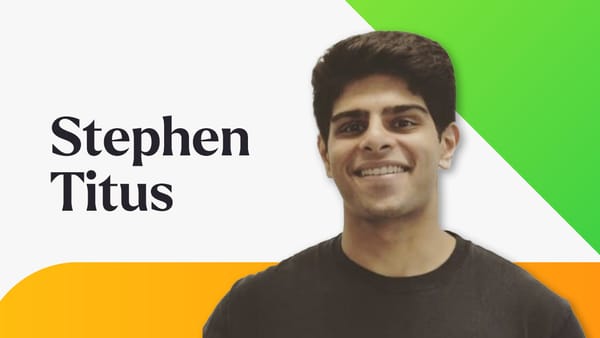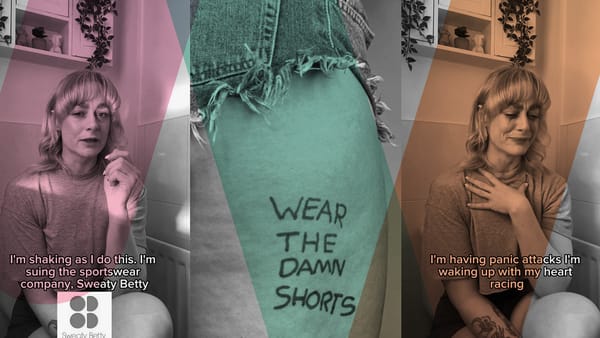The arrival of virtual influencers is making human influencers work more for their money. As virtual creators are becoming more popular in the space, we speak to Charlie Buffin, founder and CEO at Spark CGi – a company that creates CGI influencers – to find out how they go about determining an influencer’s values, how they can promote causes, and if they can persuade users to purchase when they are not in fact ‘real’.
Tell us about the CGI influencers you create and how you go about determining what values they have in order to be relatable to a brand’s audience?
At Spark CGi, our mission is to create a variety of different characters (CGI influencers, animated cartoons, etc.) that reach different demographics and stand for different things. Our first character,Cade, was built around positivity and kindness and was targeted to Gen Z consumers. This approach worked, as Cade quickly grew to 100K followers on Instagram, with strong engagement and fan loyalty. Cade received thousands of DMs from people all over the world who expressed their admiration and support for Cade and the things he stood for.Our newest character,Daisy, recently signed to LippsLA, a major modeling agency in LA. We are laying the foundation right now when it comes to her story, but the goal is to turn her into a model activist that is bold, courageous and stands up for a number of different issues. With the right content, story and audience, we’re confident we can do this.Absolutely, this has been proven by Lil Miquela, Cade, and other virtual influencers that are starting to pop up. As long as the story and messaging surrounding the character is strong and an affinity is built, promoting causes is 100% do-able and frankly, one of our bigger focuses long term. As Instagram becomes less about organic content and more about branded content, how do you see virtual influencers persuading users to purchase?
Virtual influencers are characters – Disney, Marvel, Pixar and some of the biggest companies in the world have been successful in building brands around characters they create. We look at virtual influencers in that same light. It takes a lot of time to build a brand and trust that can eventually persuade users to purchase something but there are strategies and ways to build this loyalty that has proven to work.Brands like Balmain have used virtual influencers in their campaigns but for serious brand loyalty and consumer trust, a real-life brand advocate or influencer is required. Do you agree?
I think as the virtual influencer and digital character space evolve, this will change and eventually, these characters will become more accepted. Characters have been around for decades, but they were built for traditional media (TV/Film). We want to create the next generation of characters that are built for new mediums (Instagram, YouTube, etc.). Over time, these types of figures on new media platforms will become the norm and in turn lead to serious brand loyalty and consumer trust, whether a human is involved or not.Some people would say CGI influencers are safer and carry less risk. Human creators have their brand and name to protect whereas virtual influencers can in essence simply be redesigned. What would you say to this?
There’s a risk in everything when it comes to new forms of media and entertainment, unfortunately, but I would say both CGI influencers and human influencers will continue to co-exist. I don’t think CGI influencers will replace humans, I just think the influencer space will evolve to now include this particular segment. I think there’s a lot of upside in working with both CGI influencers, as well as human creators.With regulations around authenticity constantly evolving, virtual influencers could potentially offer brands a new loophole to side-step advertising laws. How can we combat this potential issue?
I think regulations will ultimately apply to virtual influencers just as they do with human creators. As the space evolves and matures, so will the regulations. This isn’t a bad thing at all, but I think both types of creators will be treated the same regarding the surrounding regulations.So far, we’re only seeing virtual influencers really grow strong followings on Instagram, but the opportunity is wide open to also grow on YouTube, Tik Tok, and other major platforms. Some are starting to get into music and drop songs on Spotify/Soundcloud. I think as video content develops amongst virtual influencers and AI is also incorporated, you’ll see these influencers start to grow major audiences on YouTube. Whether it be Q&A videos or daily vlogs, there’s a lot of opportunity on video platforms.What do you think the future of virtual influencers holds?
Virtual influencers and other forms of digital characters will continue to grow on social platforms and some may eventually transcend into mainstream, whether they get a Netflix show, a movie deal or begin to tour as a recording artist. These characters will grow their followings on digital-first and foremost, and then eventually evolve into traditional. This is model is ultimately the opposite of characters that have grown over the last 40 to 50 years. SpongeBob was built for TV but is now building an audience on social platforms. Some major characters who have had massive traditional success are still not evolving and growing a following on social platforms. I think we’ll see a huge push for both legacy characters as well as new characters, such as virtual influencers, to build audiences on social, as that is where all consumer attention lies these days.This is the biggest opportunity for characters to grow a following and build distribution (both virtual influencers and animated characters) that we’ve probably ever seen.








